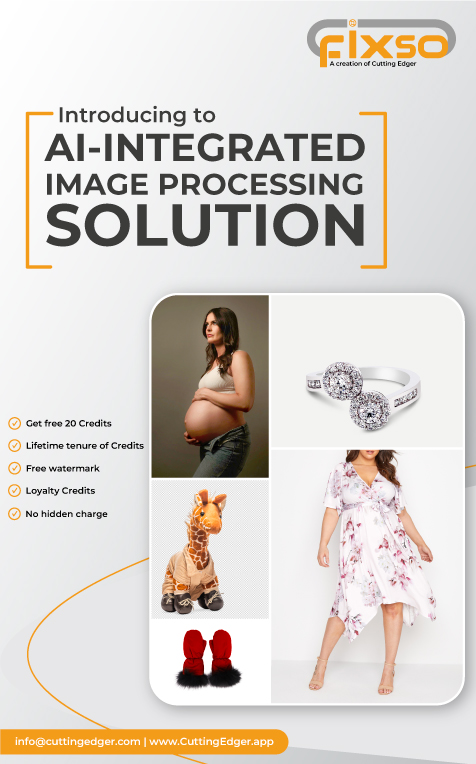Mastering Textures and Lighting in 3D Furniture Rendering
by Delwar Hussain / Last Update: September 18, 2023
3D furniture renderings have revolutionized the way the furniture industry showcases its creations. With the ability to create stunning and realistic representations of furniture pieces in virtual environments, 3D renderings have become an indispensable tool for furniture designers, manufacturers, and consumers alike. Gone are the days of relying solely on static images or traditional photography to visualize a furniture product. The advent of 3D rendering has opened up a whole new realm of possibilities, allowing for dynamic, interactive, and photorealistic renders that bring furniture designs to life. In this article, we will delve into the fascinating world of mastering lighting and textures in 3D furniture renderings, exploring the techniques and approaches that can transform a simple 3D furniture model into a captivating and visually striking finished product. Get ready to embark on a journey where imagination meets technology, and where the lines between the virtual and real life blur to create extraordinary 3D renderings.
The Basics of Lighting in 3D Furniture Rendering
Lighting is a crucial element in 3D furniture rendering as it can make or break the overall appearance of a furniture item. In this section, we will explore the basics of lighting in 3D furniture rendering.
Understanding Light Sources
In 3D rendering, the lighting is usually simulated to replicate the effects of real-life light sources. The most common types of light sources used in 3D rendering are point lights, spotlights, directional lights, and area lights. Furniture designers need to have a good understanding of these different light sources to create the desired lighting effects in their 3D scenes.
Types of Lighting
There are three primary types of lighting in 3D furniture rendering: ambient lighting, direct lighting, and indirect lighting. Ambient lighting is the general lighting that is present in a 3D scene and illuminates all objects in the scene. Direct lighting refers to the light that is emitted directly from a light source and illuminates a specific area or object. Indirect lighting, on the other hand, is the light that bounces off objects and surfaces in a 3D scene, creating a diffuse and soft lighting effect.
Lighting Techniques
There are several lighting techniques that can be used in 3D furniture rendering to create different moods and effects. Some of these techniques include three-point lighting, volumetric lighting, and global illumination. Three-point lighting is a classic lighting technique that involves using three lights to illuminate an object or scene. Volumetric lighting creates a misty or foggy effect by scattering light particles in the air. Global illumination simulates the way light bounces off objects in a scene, creating a more realistic and natural-looking effect.
By mastering the basics of lighting in 3D furniture rendering, furniture designers can create realistic images that showcase their furniture items in the best possible light. The next section will explore the importance of textures in 3D furniture rendering.
Creating Realistic Textures for 3D Furniture Rendering
Textures play a critical role in making 3D furniture renderings look realistic and visually appealing. In this section, we will explore the process of creating realistic textures for 3D furniture rendering.
Texture Mapping
Texture mapping is the process of applying a 2D image onto a 3D model’s surface, creating the illusion of texture. Furniture designers can use high-quality texture maps to create intricate and detailed textures that make their furniture items look more realistic. Texture maps are available in a wide range of styles, from wood and metal to fabric and leather.
UV Unwrapping
UV unwrapping is the process of flattening a 3D model’s surface to create a 2D representation of its geometry. This process allows designers to apply textures accurately and consistently across all parts of the model. UV unwrapping can be a time-consuming and challenging process, but it is essential for creating realistic and seamless textures.
Material Creation
Creating a realistic material involves combining texture maps with various material properties such as glossiness, reflectivity, and transparency. Furniture designers can use software such as Substance Designer or Blender to create materials that accurately simulate real-life surfaces. By adjusting the material properties and texture maps, designers can create a range of different finishes, such as glossy, matte, or rough textures.
Texture Resolution
Texture resolution refers to the number of pixels used in a texture map. Higher texture resolutions result in more detailed and realistic textures. However, higher resolution textures also require more processing power and can slow down the rendering process. Finding the right balance between texture resolution and rendering time is crucial for creating realistic textures.
By mastering the process of creating realistic textures, furniture designers can elevate their 3D furniture renderings to new heights. In the next section, we will explore how furniture designers can use 3D furniture rendering techniques to showcase their designs in virtual environments.
Advanced Lighting Techniques in 3D Furniture Rendering
Lighting is an essential element in creating realistic 3D furniture renderings. In this section, we will explore some advanced lighting techniques that furniture designers can use to achieve photorealistic renders.
Global Illumination
Global illumination (GI) is a lighting technique that simulates how light bounces and reflects within a virtual environment. By using GI, designers can create realistic and accurate lighting conditions that mimic real-life settings. GI can be computationally intensive, but the results are worth the extra time and effort.
HDR Lighting
HDR lighting involves using high dynamic range (HDR) images as light sources within a 3D scene. HDR images contain a broader range of brightness values than standard images, allowing for more accurate and realistic lighting conditions. Designers can use HDR images to create complex lighting scenarios, such as reflections and caustics, that are difficult to achieve with traditional lighting techniques.
Area Lights
Area lights are a type of light source that simulates real-life light fixtures such as lamps or ceiling lights. By using area lights, designers can create realistic and accurate lighting conditions that mimic real-life settings. Area lights can be used to create soft shadows, specular highlights, and other lighting effects that contribute to the realism of the scene.
Light Probes
Light probes are used to capture lighting information from a real-life environment and apply it to a 3D scene. This technique is commonly used in virtual reality applications, where designers want to create a more immersive experience for users. By using light probes, designers can create accurate and realistic lighting conditions that match the real-life environment.
By using these advanced lighting techniques, furniture designers can create photorealistic 3D furniture renderings that showcase their products in the best possible light. In the next section, we will explore how furniture designers can use 3D furniture rendering to create compelling marketing materials.
Advanced Texture Techniques in 3D Furniture Rendering
Creating realistic textures is an essential aspect of 3D furniture rendering. In this section, we will explore some advanced texture techniques that furniture designers can use to create photorealistic renders.
PBR Textures
Physically based rendering (PBR) textures are a type of texture that mimics real-life materials’ physical properties. By using PBR textures, designers can create accurate and realistic materials that respond to lighting conditions accurately. PBR textures consist of multiple maps, including albedo, roughness, metalness, and normal maps.
Substance Designer
Substance Designer is a powerful tool used by many designers to create custom PBR textures. It offers a node-based workflow that allows designers to create complex materials by combining different maps and effects. Substance Designer also offers a vast library of pre-made materials that designers can use or customize for their projects.
Texture Projection
Texture projection is a technique used to apply textures accurately to a 3D model’s surface. By projecting textures onto a model’s surface, designers can ensure that the textures line up correctly and appear seamless. This technique is particularly useful when working with complex models with intricate details.
Displacement Mapping
Displacement mapping is a technique used to add geometric details to a model’s surface by modifying its vertices. By using displacement mapping, designers can add intricate details such as bumps, cracks, and creases to a model’s surface, creating a more realistic and tactile feel.
By using these advanced texture techniques, furniture designers can create photorealistic 3D furniture renderings that accurately represent their products. In the next section, we will explore how furniture designers can use 3D furniture rendering to create compelling marketing materials.
Optimizing Lighting and Textures for 3D Furniture Rendering
Optimizing lighting and textures is crucial in creating high-quality 3D furniture renderings that accurately represent furniture products. In this section, we will explore some techniques that furniture designers can use to optimize their lighting and textures to create realistic and appealing 3D furniture renderings.
Importance of Light Sources
Lighting is one of the most important factors in creating realistic 3D furniture renderings. In real life, furniture products are seen under different lighting conditions, and replicating those conditions in a virtual environment is essential to create a realistic representation. Designers can use a wide range of light sources, including directional, point, and spotlights, to create the desired lighting effect.
HDR Lighting
HDR (high dynamic range) lighting is a technique used to capture a wide range of lighting conditions in a single image. By using HDR lighting, designers can create more realistic lighting effects that accurately represent the lighting conditions of the real world. HDR lighting can be achieved by using specialized equipment or through post-processing techniques.
UV Mapping
UV mapping is a technique used to create a 2D texture map that accurately represents a 3D model’s surface. By using UV mapping, designers can ensure that textures appear seamless and accurate when applied to a 3D model’s surface. This technique is particularly useful when creating complex furniture products with intricate details.
Real-time Rendering
Real-time rendering is a technique used to create 3D furniture renderings that can be rendered and displayed in real-time. By using real-time rendering, designers can create interactive 3D scenes that can be explored by users in a virtual environment. Real-time rendering is particularly useful when creating marketing materials or interactive product showcases.
By optimizing their lighting and textures using these techniques, furniture designers can create high-quality 3D furniture renderings that accurately represent their products and appeal to their target audience. In the next section, we will explore the benefits of using 3D furniture rendering in the furniture industry.
Conclusion
Finally, mastering lighting and textures is essential in creating high-quality 3D furniture renderings that accurately represent furniture products and appeal to customers. Furniture designers can use a wide range of techniques to create realistic lighting and textures, including HDR lighting, UV mapping, and real-time rendering.
Optimizing lighting and textures can also provide significant benefits to furniture designers, including the ability to showcase furniture products in virtual environments, reduce costs associated with traditional photography, and create interactive product showcases.
As the furniture industry continues to evolve, incorporating 3D furniture rendering into the design process can provide significant advantages in terms of speed, cost, and overall design quality. By investing in the tools and techniques necessary to create high-quality 3D furniture renderings, designers can stay competitive in an increasingly crowded market and provide their customers with the best possible representation of their furniture products.
Article by
Delwar Hussain
Image Processing Expert, Photography Enthusiast, Blogger, COO at Cutting Edger
Over 18 years of experience in Graphic Design, Image Editing, 3D Modeling/Rendering and Digital Products, I have got opportunity to work with different local and multi-national companies, among of them GraphicPeople, Modern Herbal Group and British Broad Casting (BBC) can be highlighted. During my career I have worked with Coca-Cola, Turkish Airlines, Singapore British American Tobacco, Dell, Pfizer Pharmaceuticals, Indeed.com, International Hotel Group (IHG), Santander Bank, Quad Inc. Adidas, Nike, Dove etc. Having 18 years of experience and being a Co-Founder and COO of Cutting Edger is providing Post Production Image Editing, 3D Modeling and Rendering, Desktop Publishing and Digital Products like Web Design and Development, Software Development, etc.

